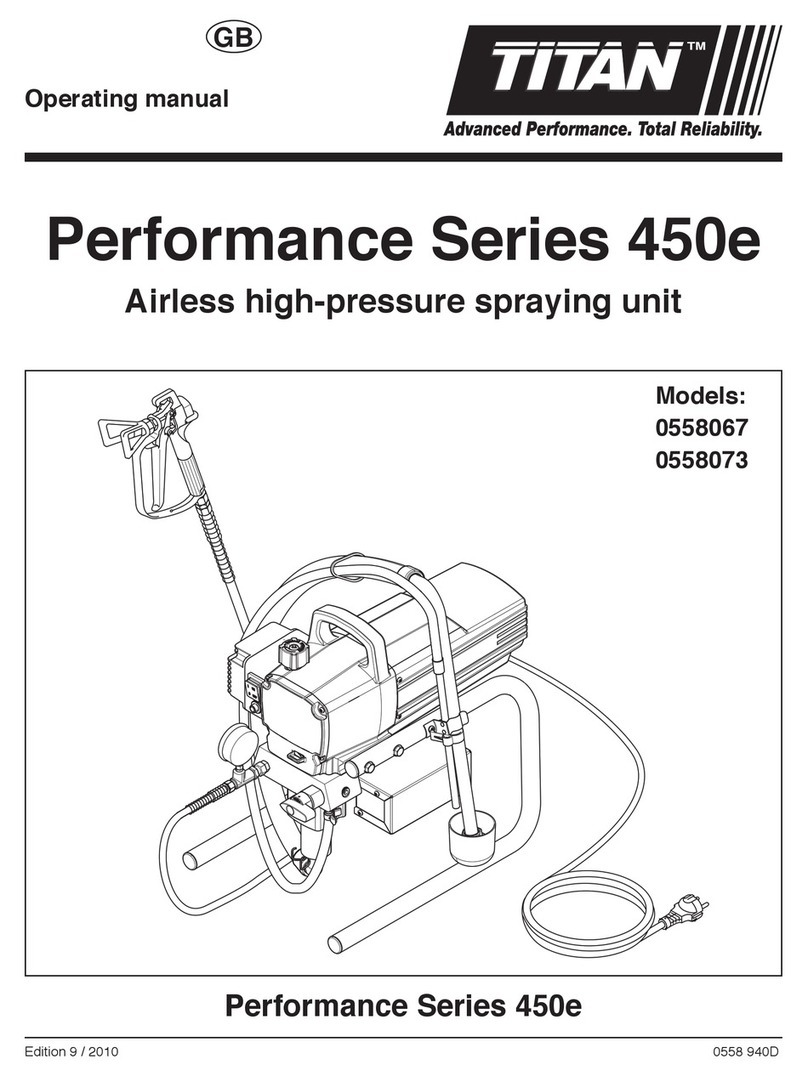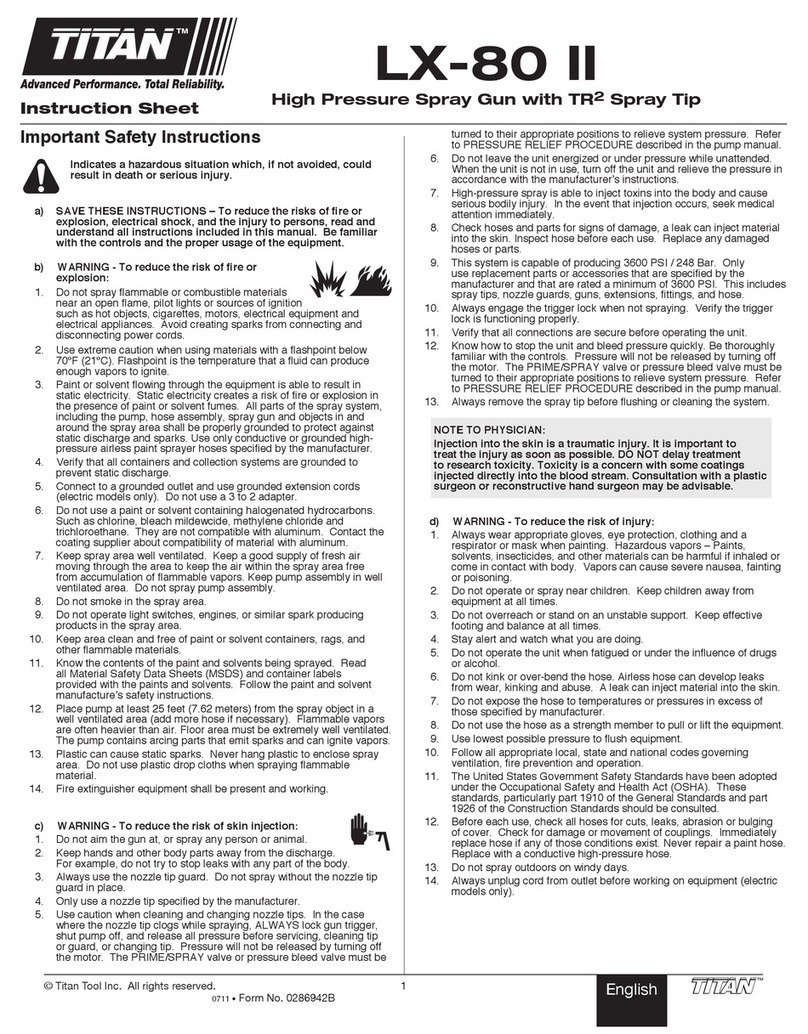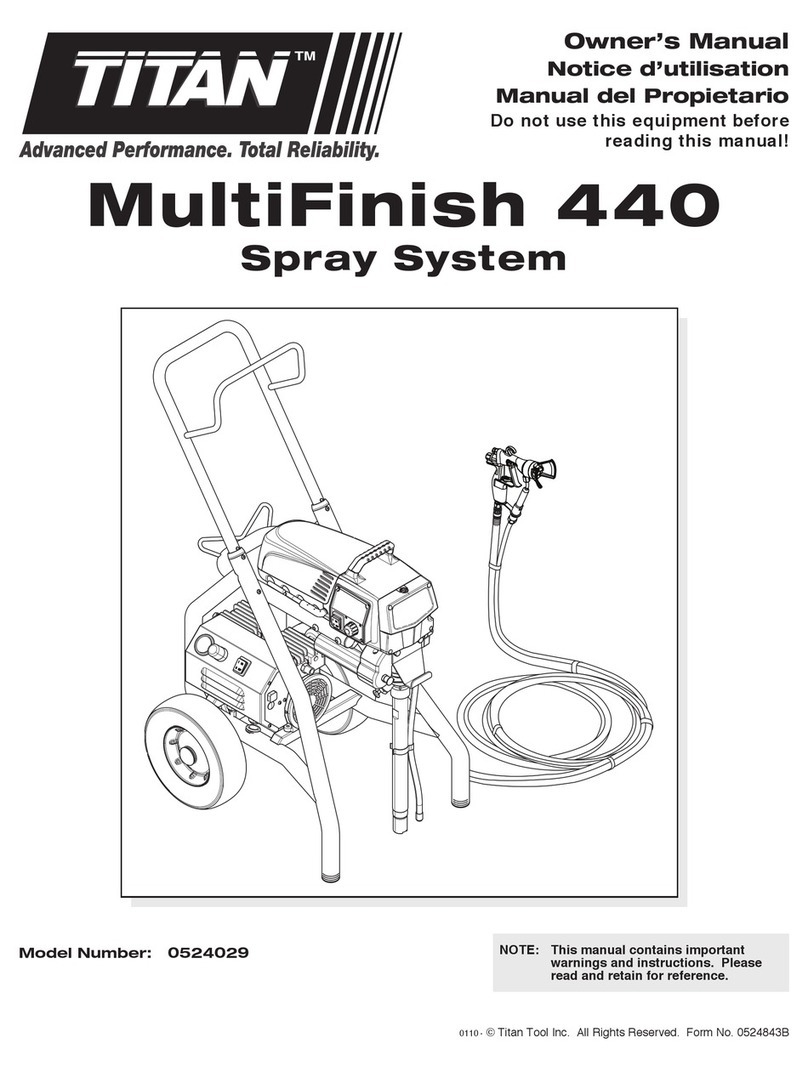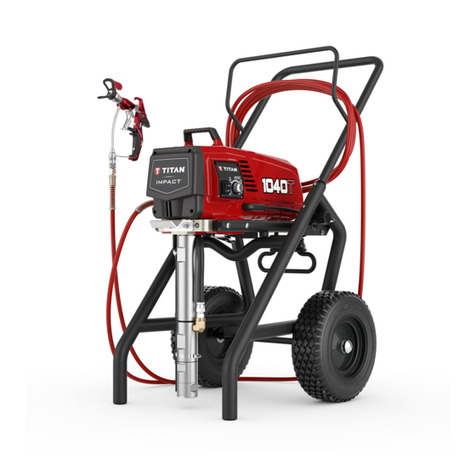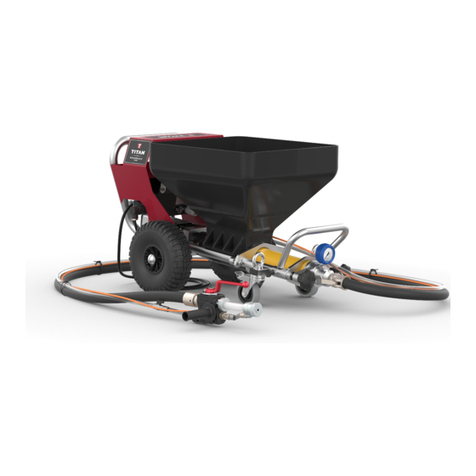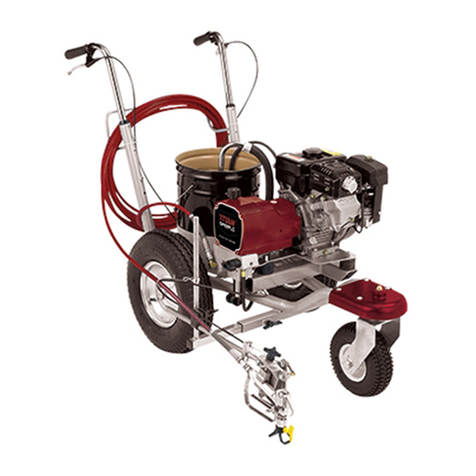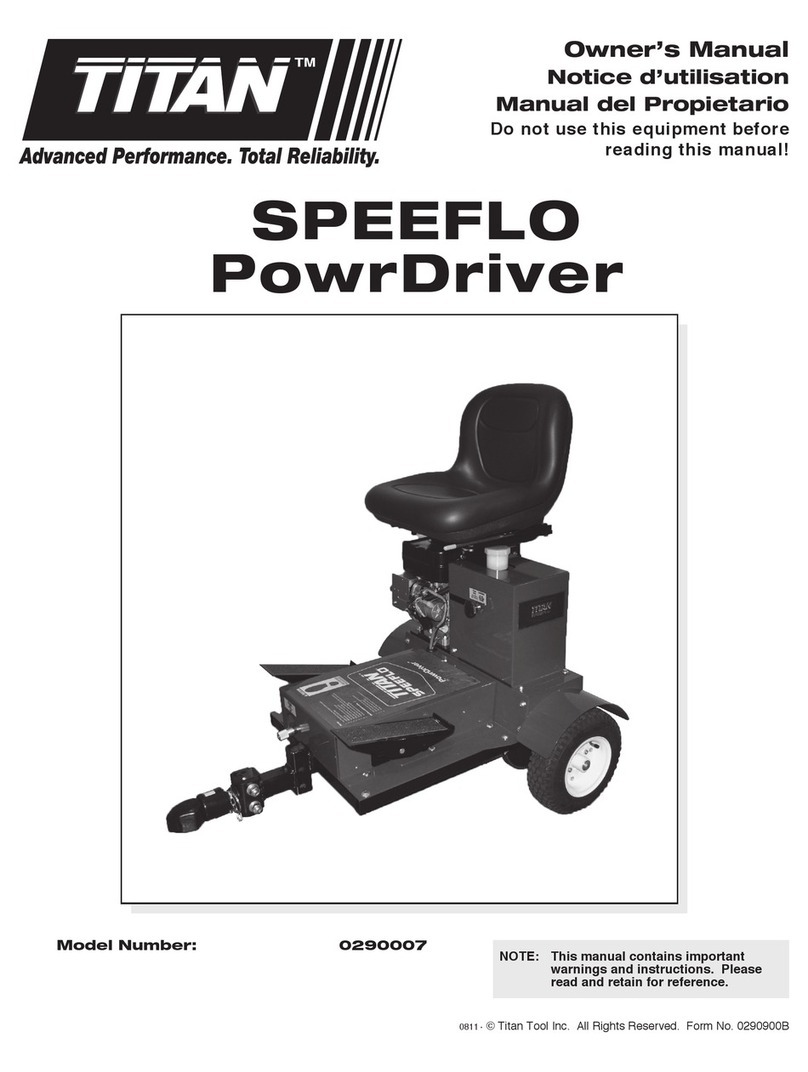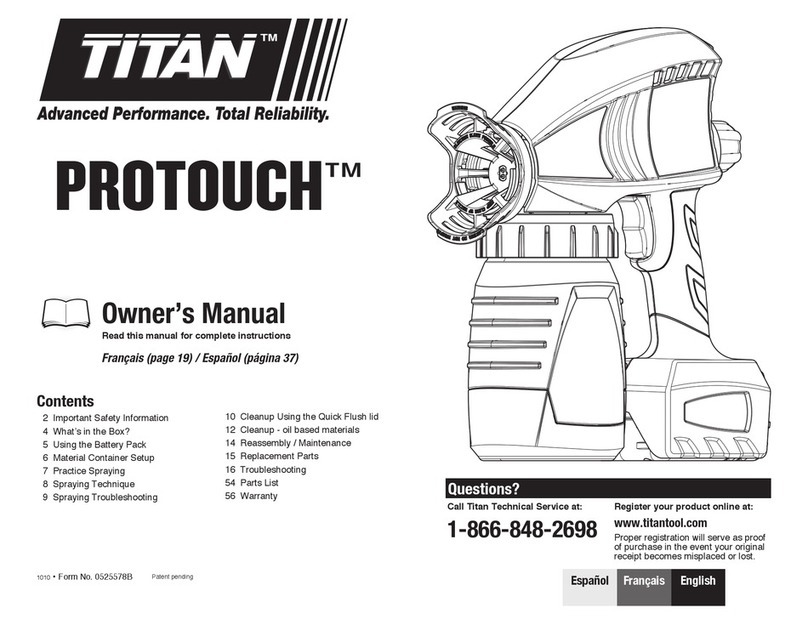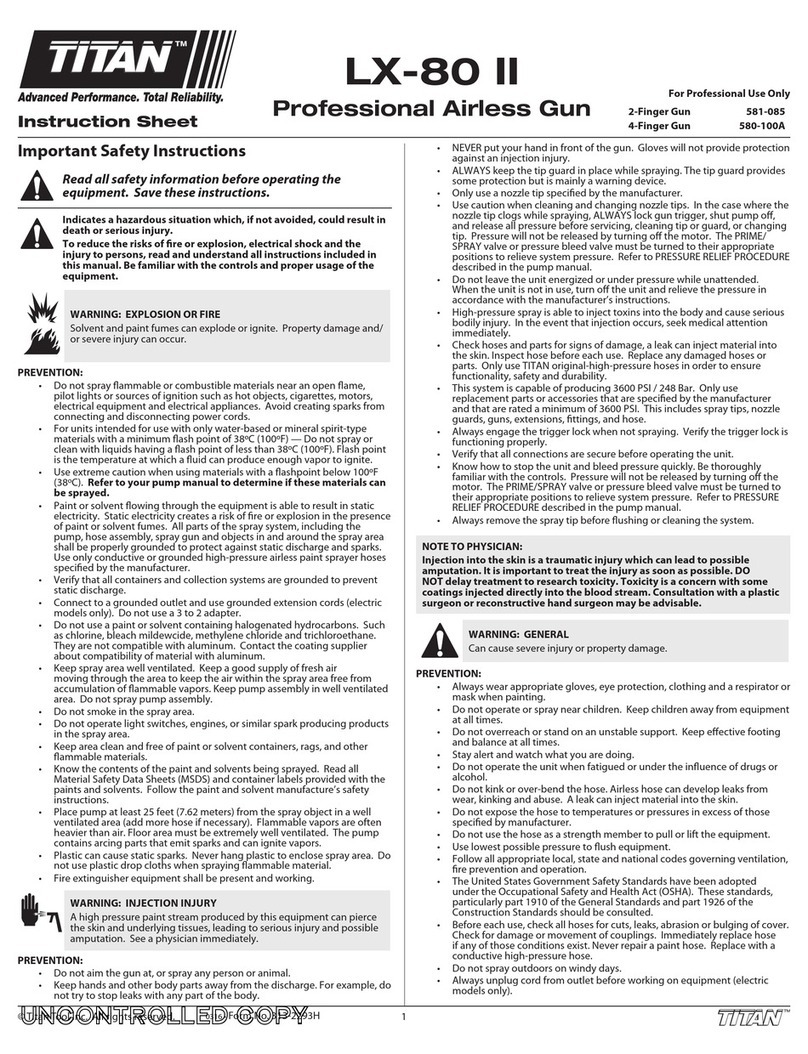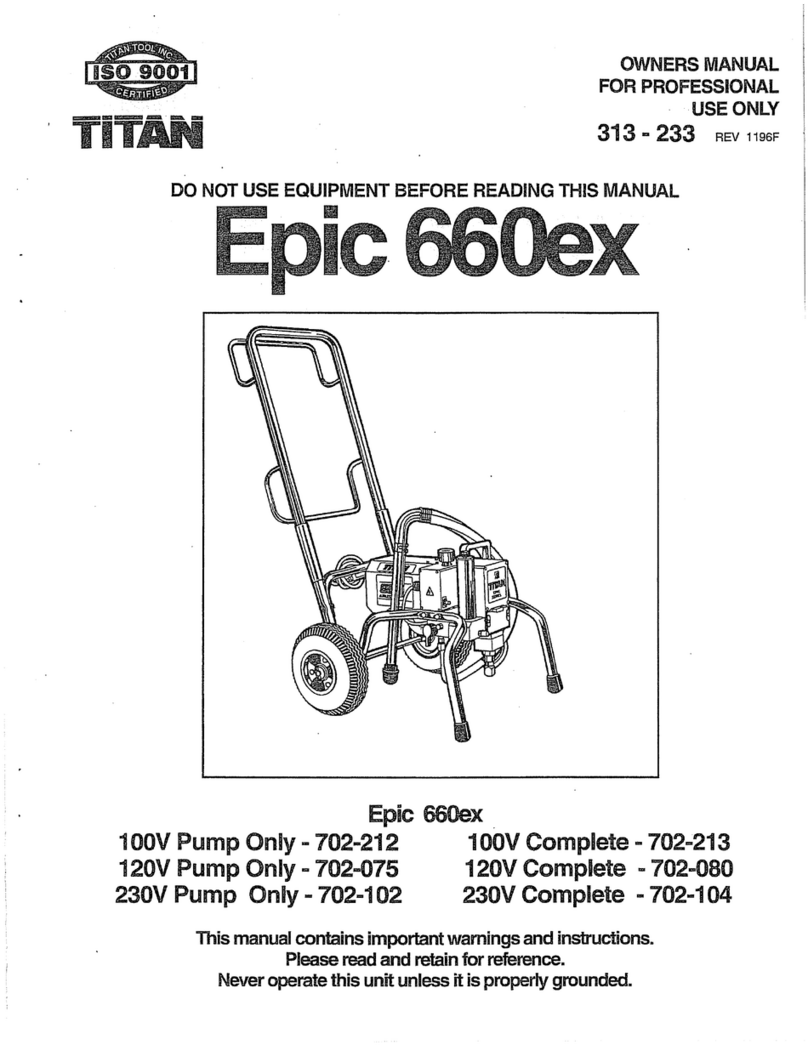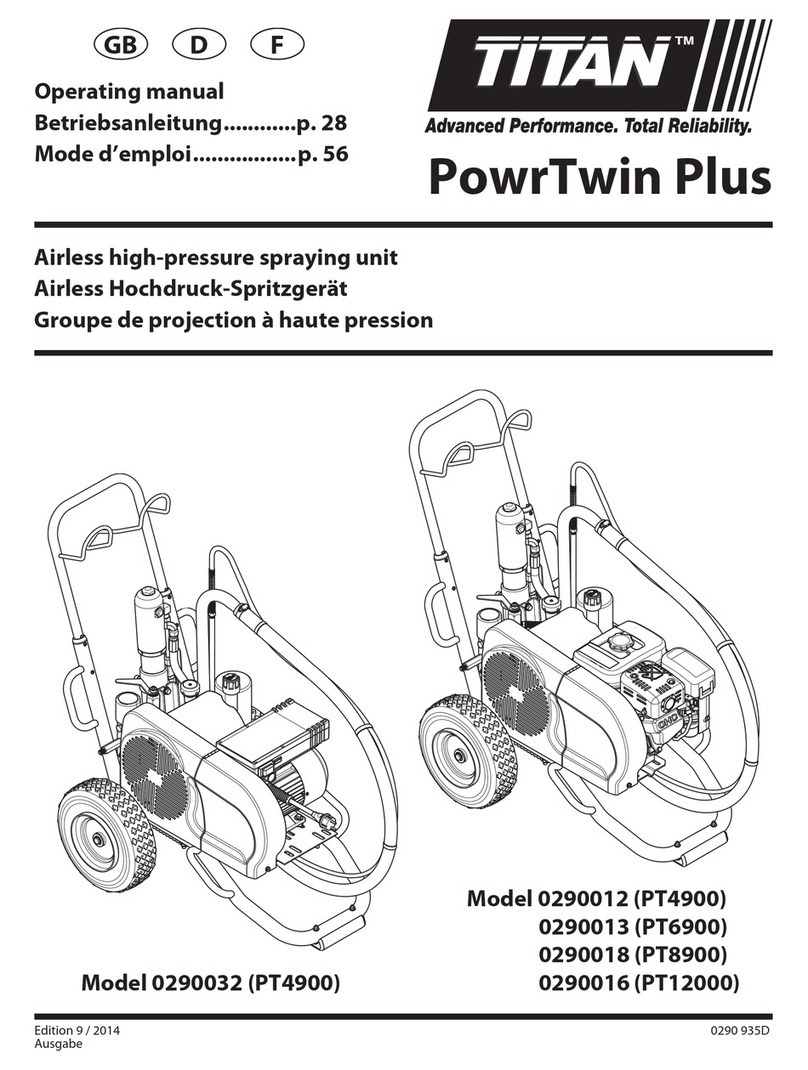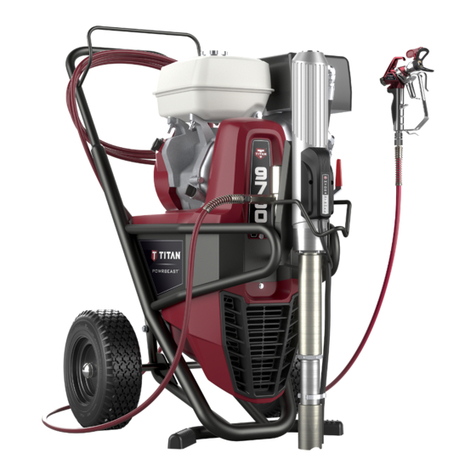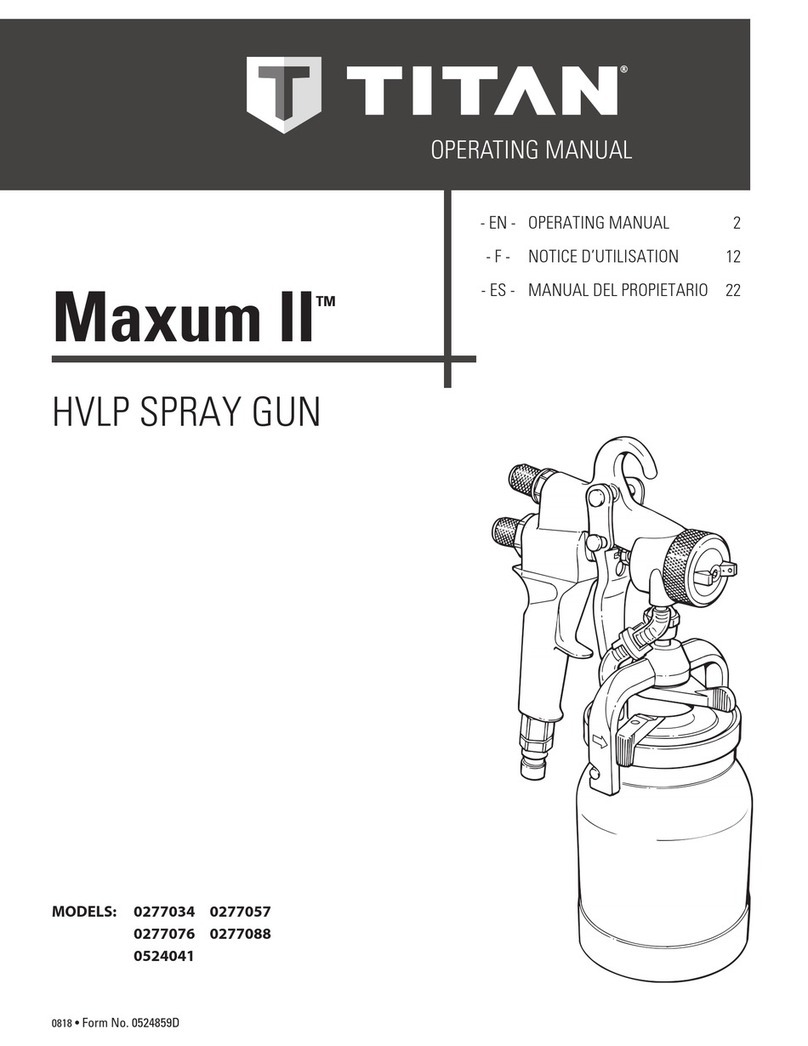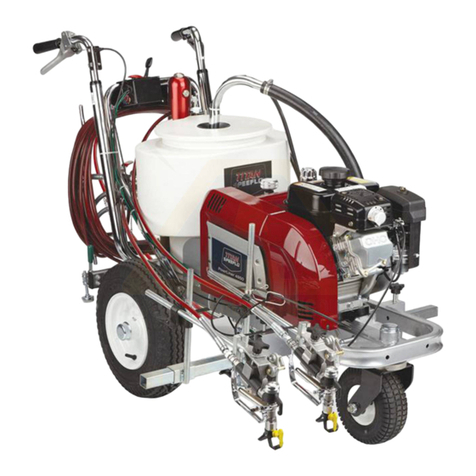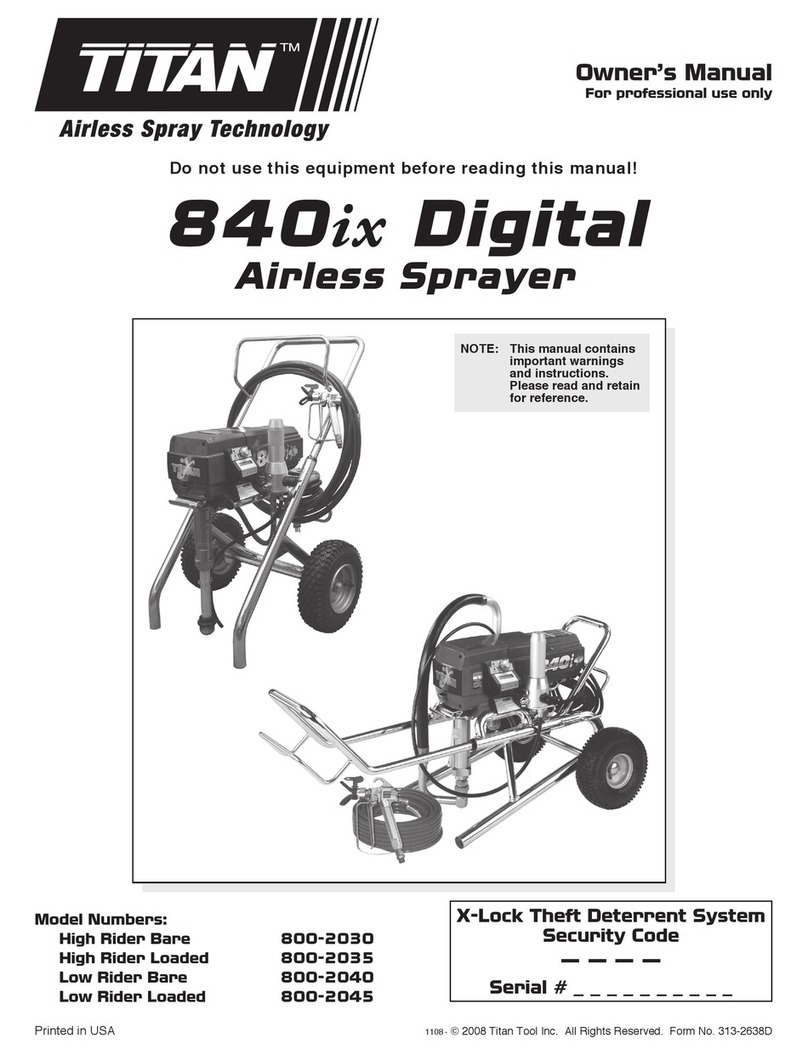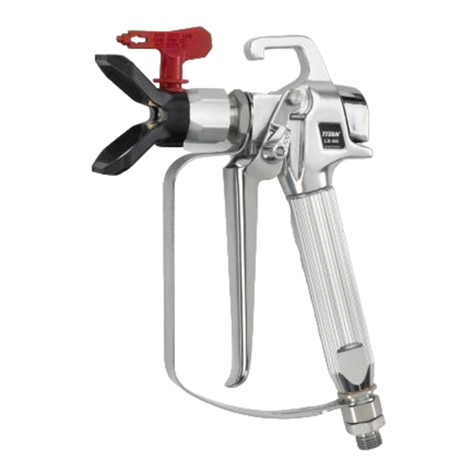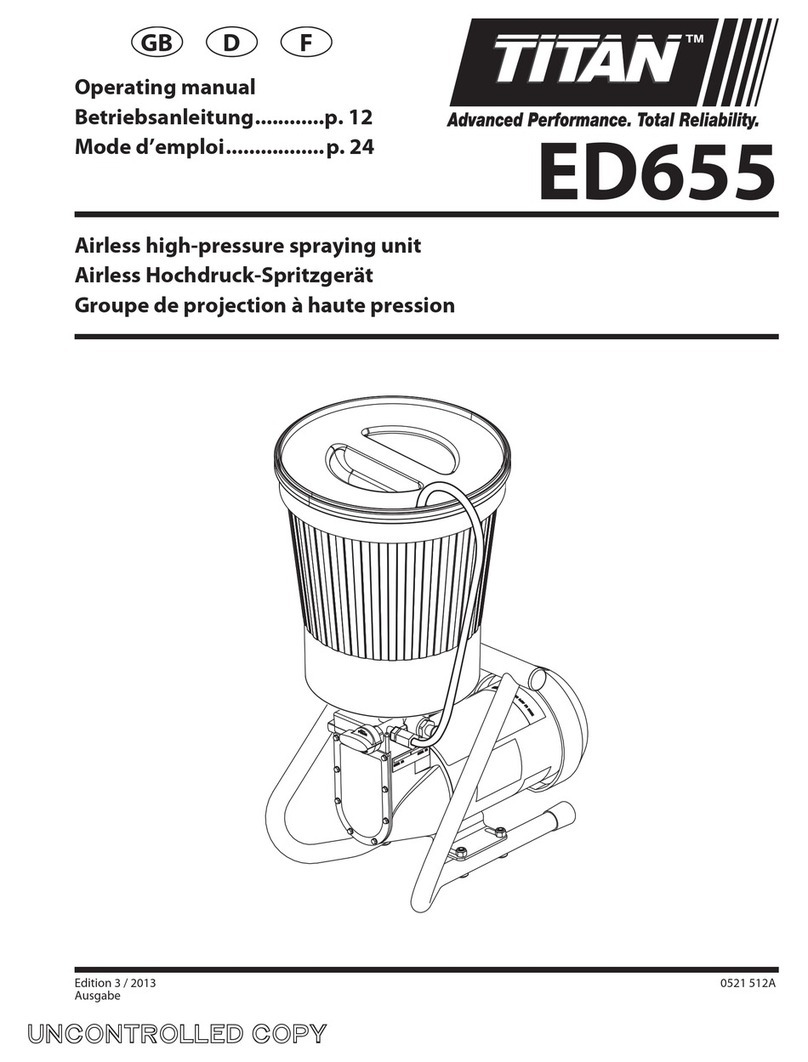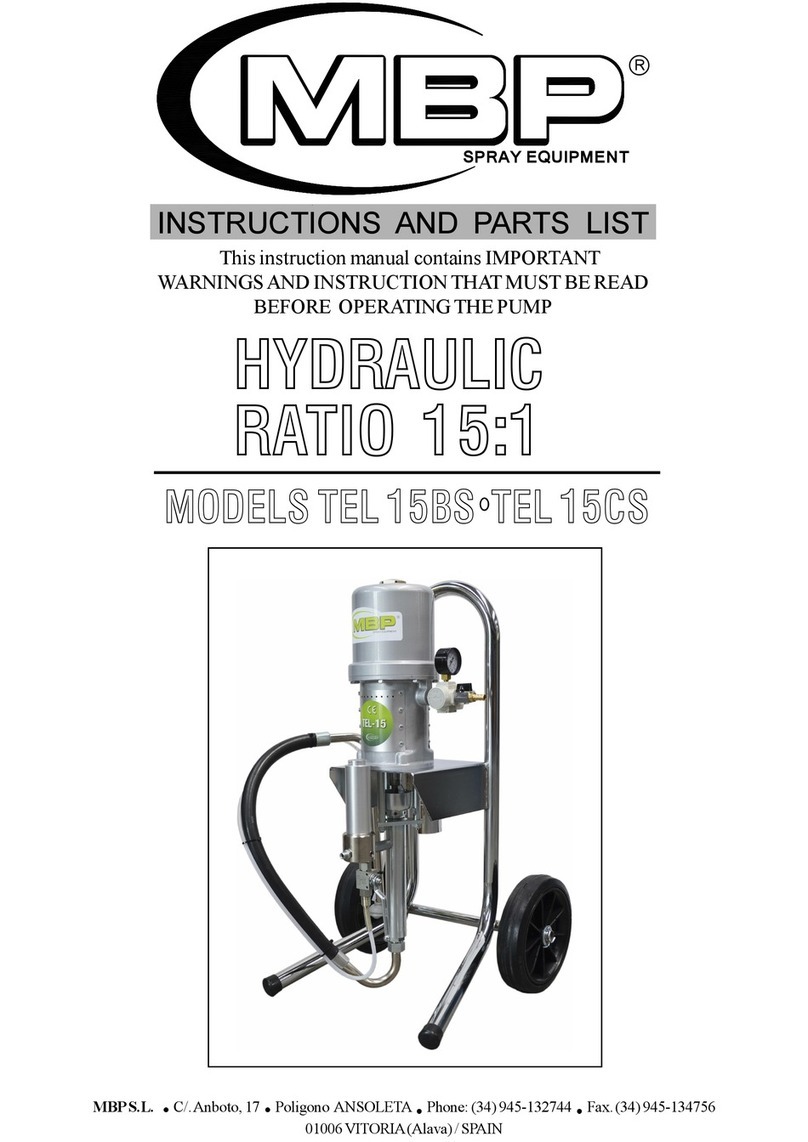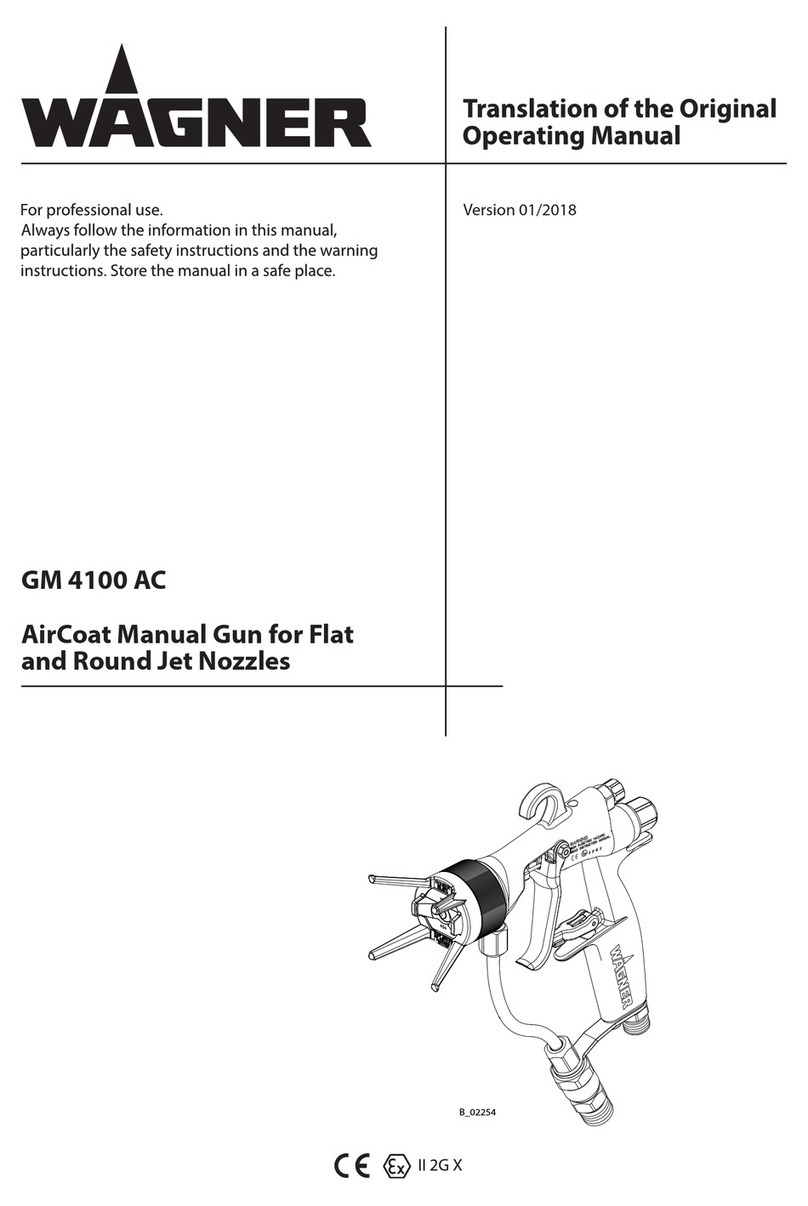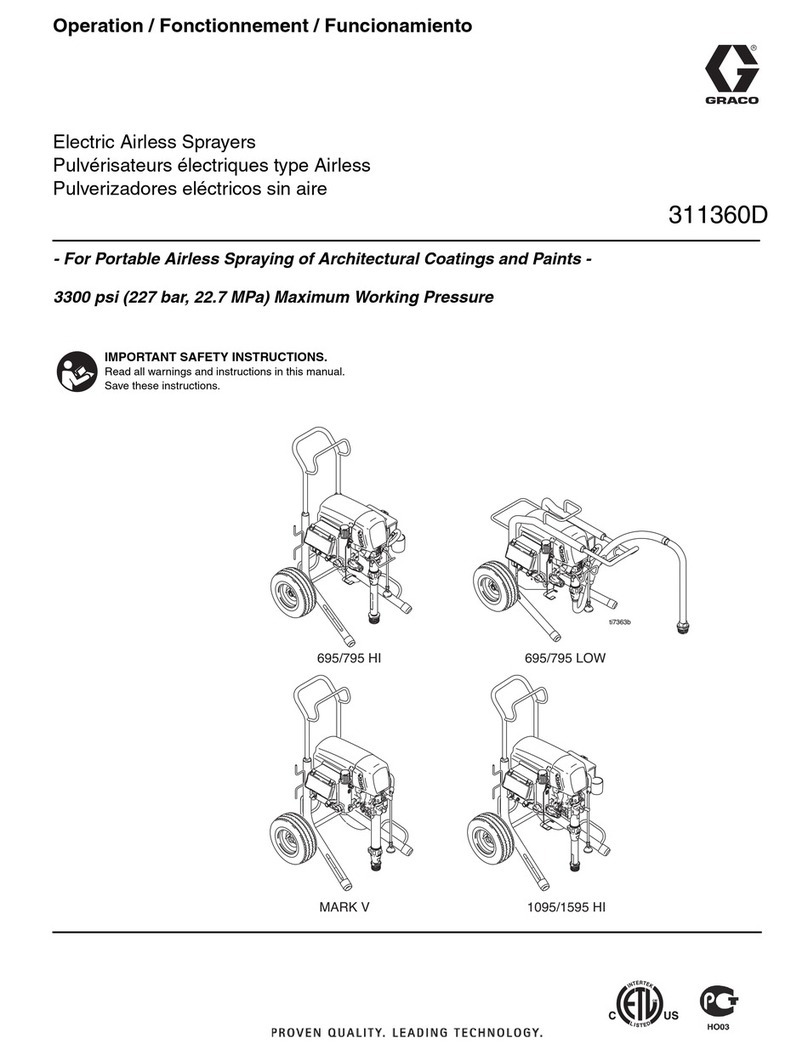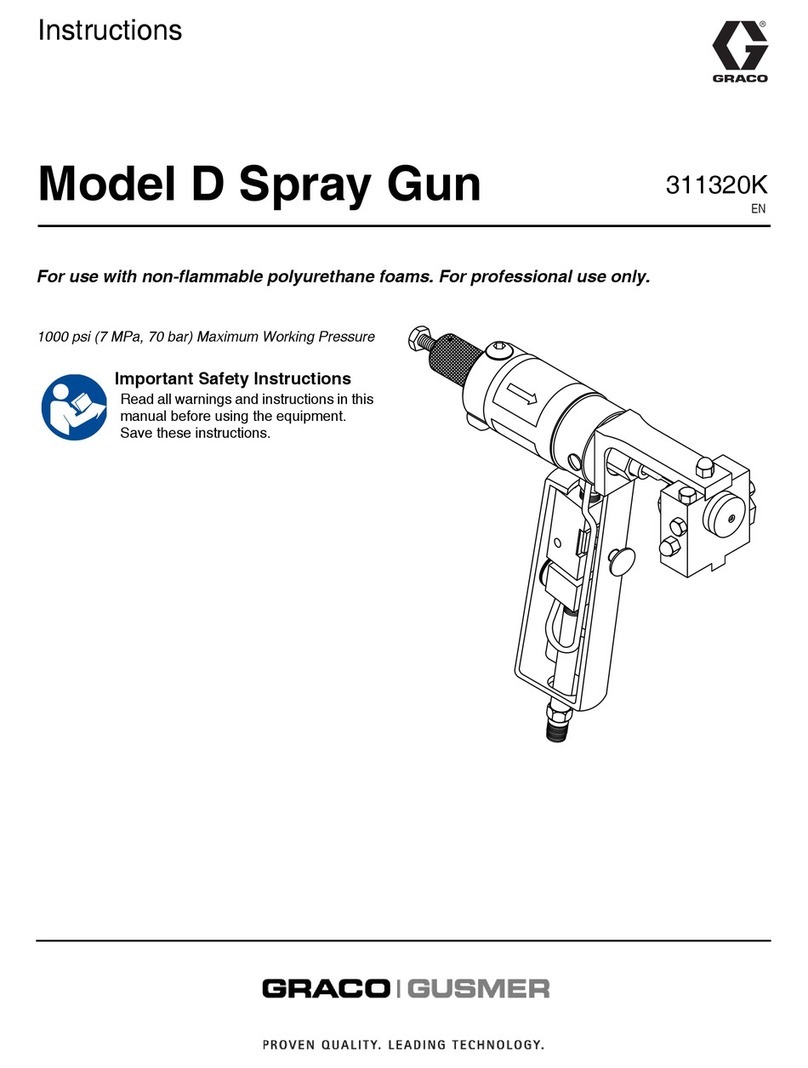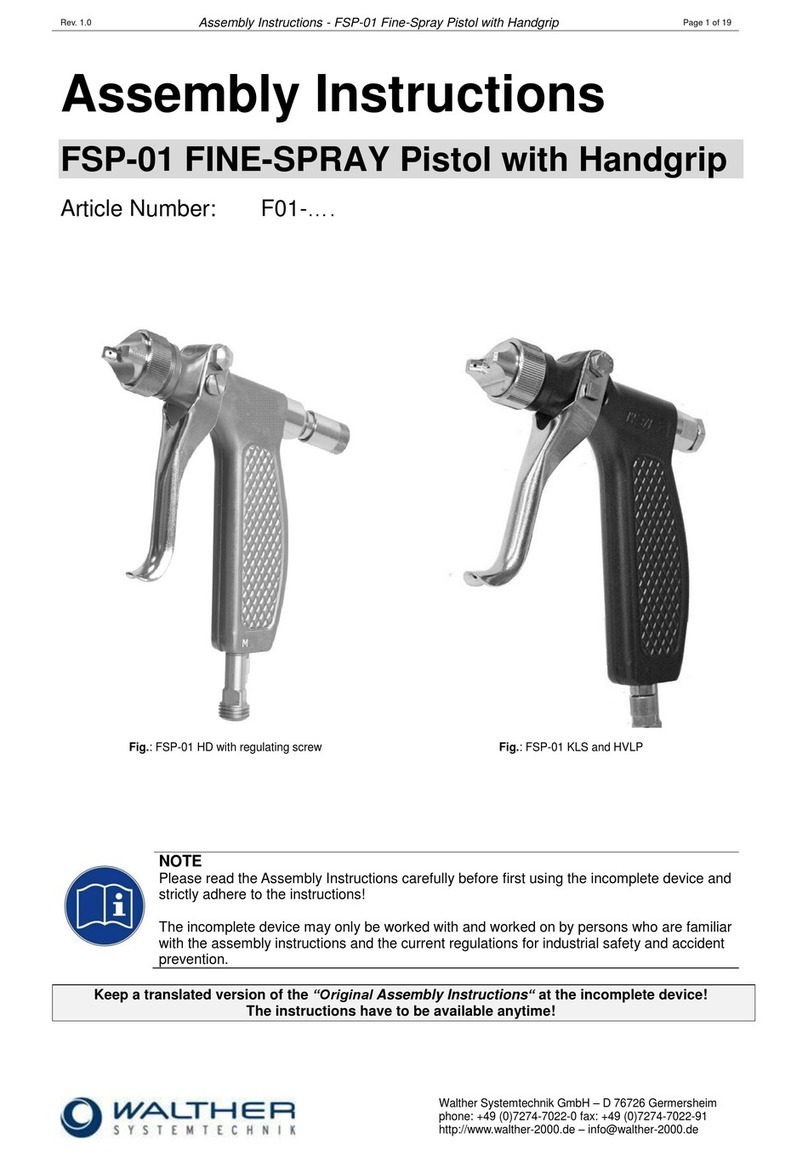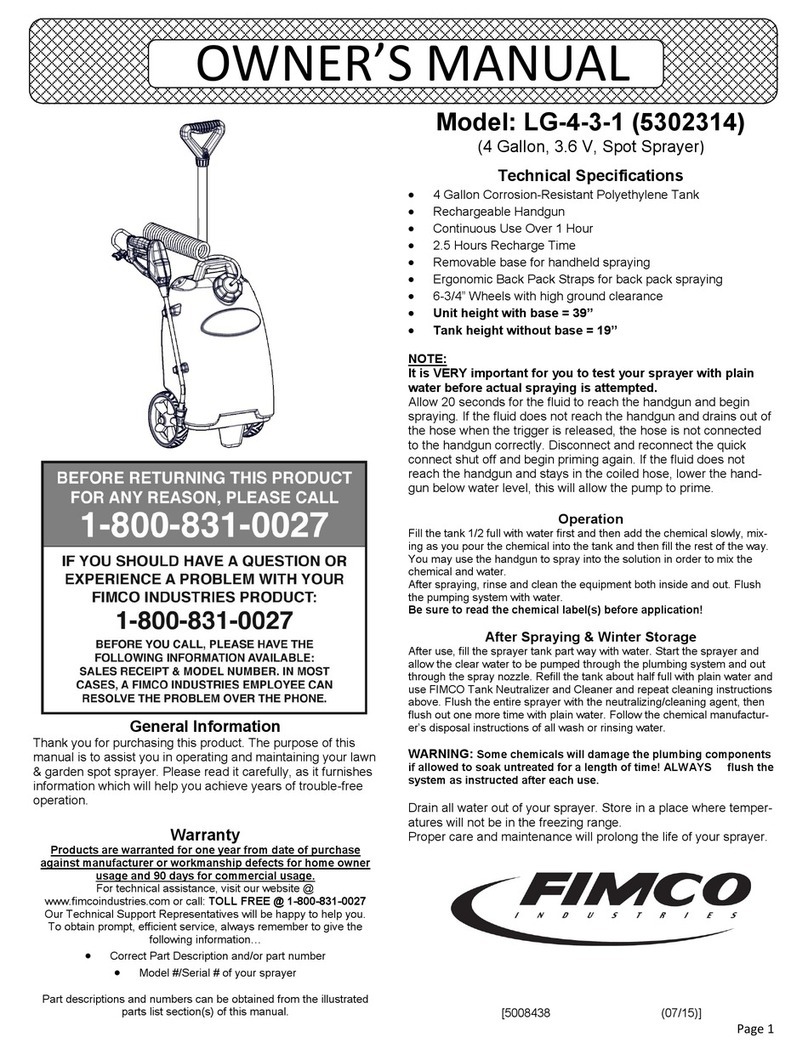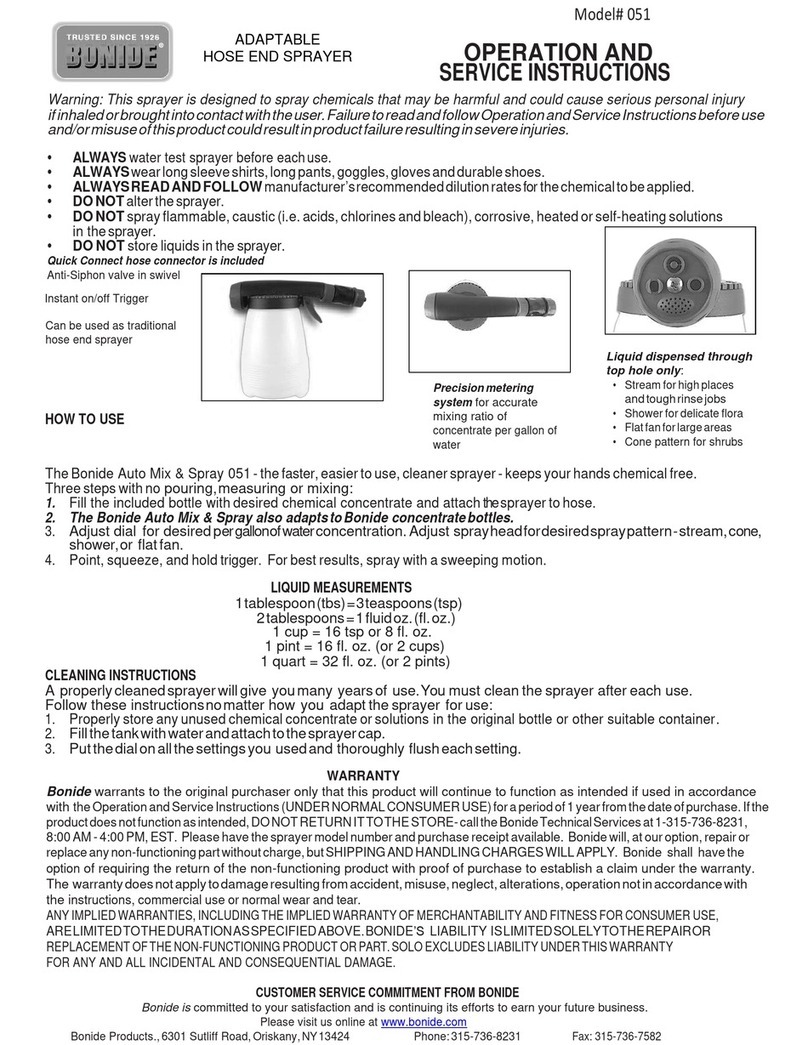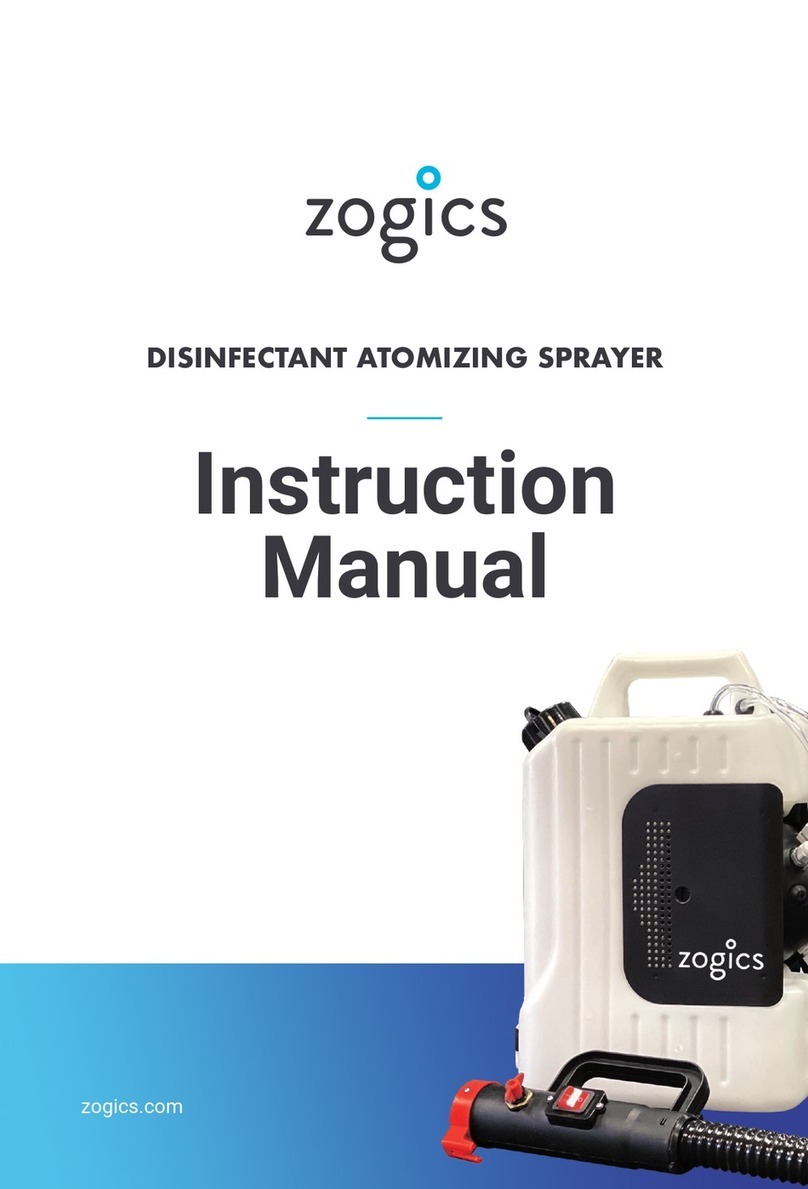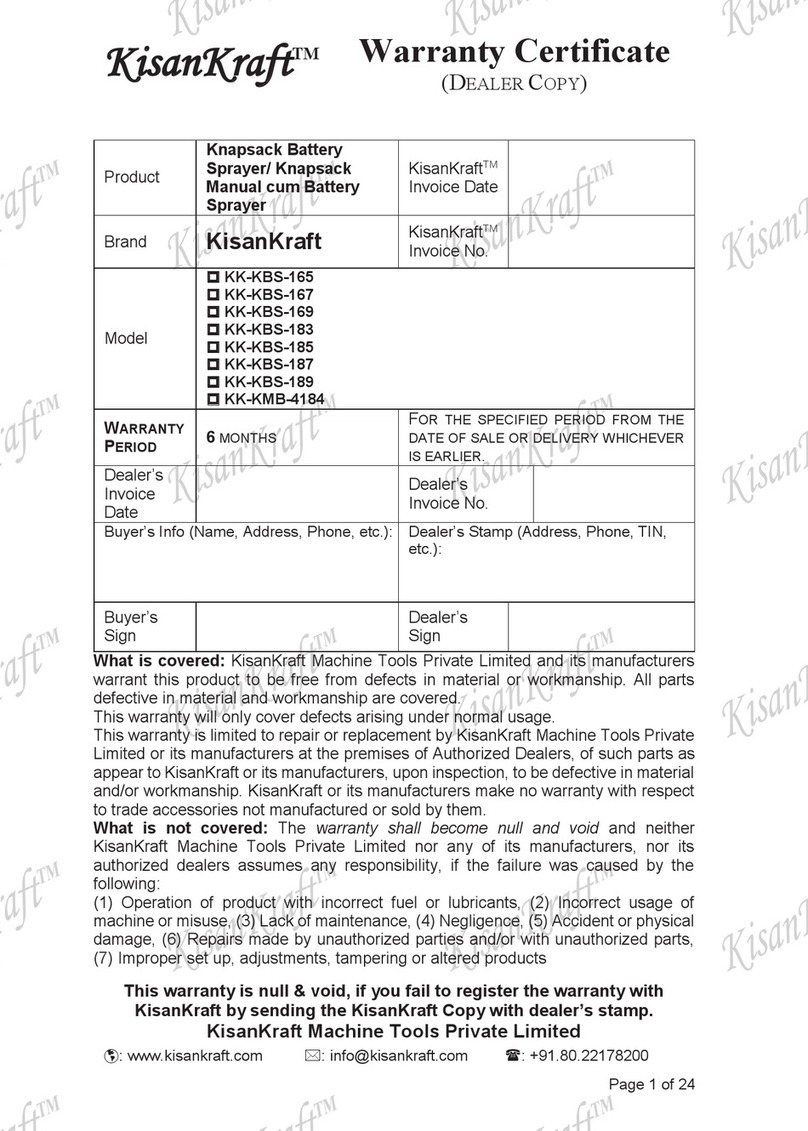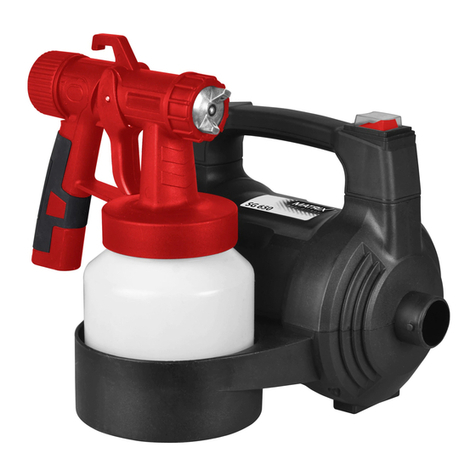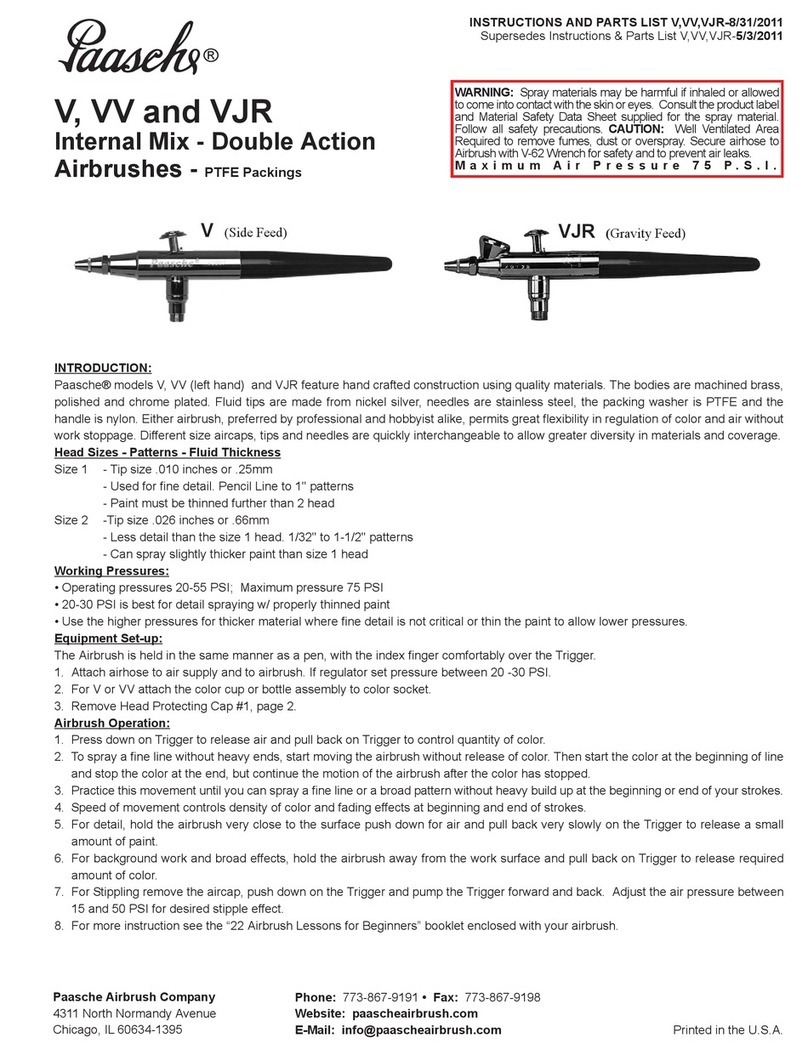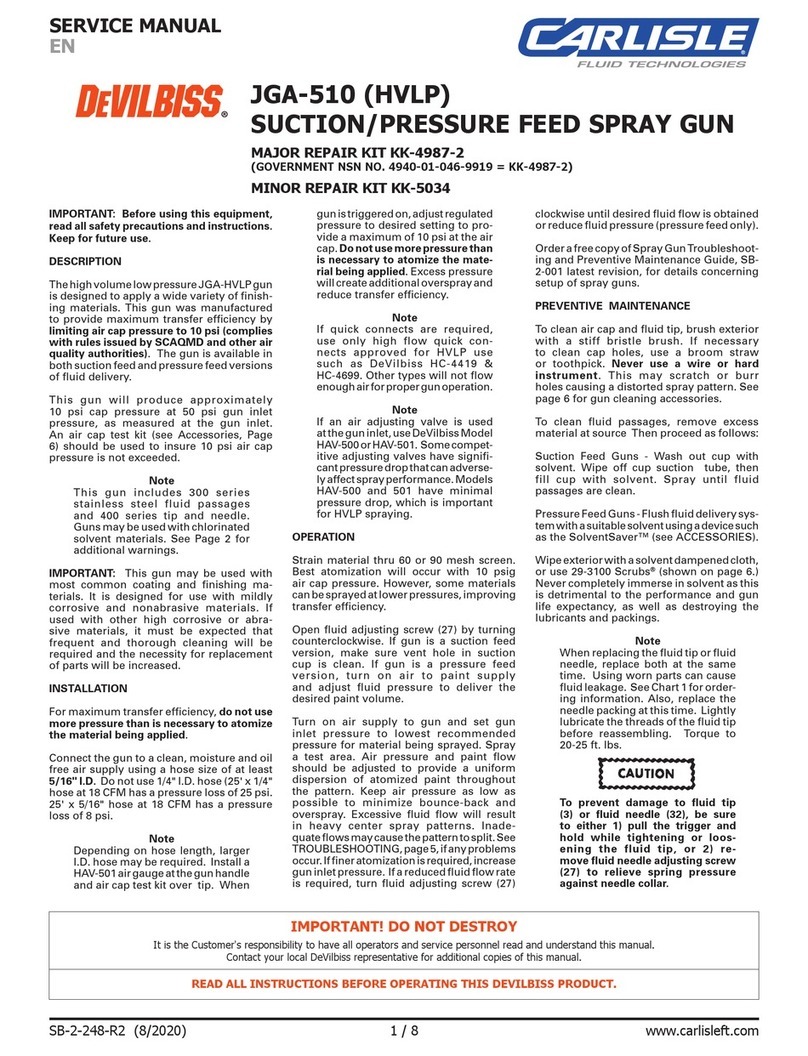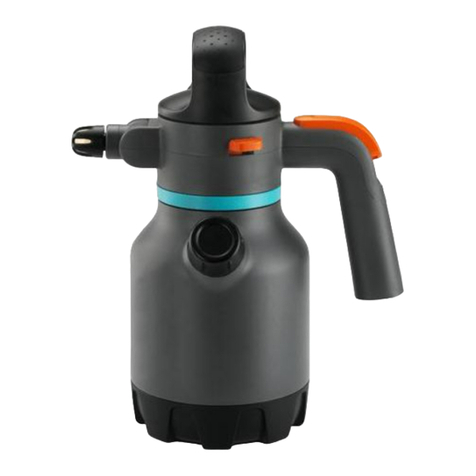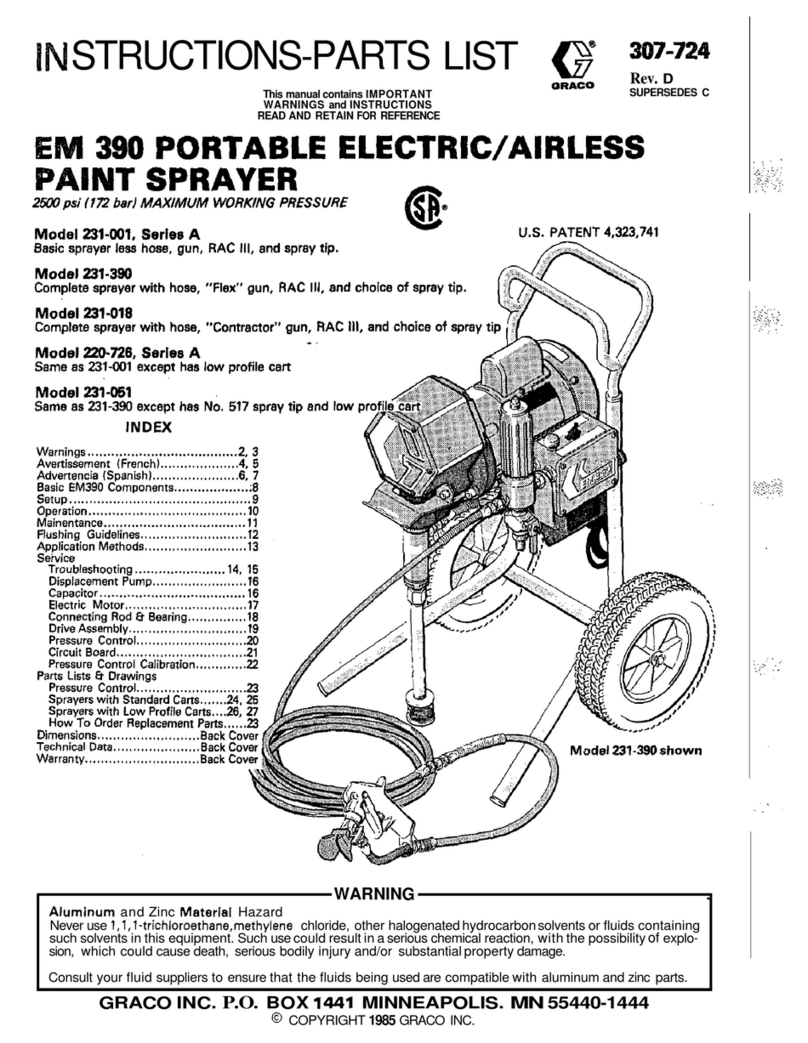
2 © Titan Tool Inc. All rights reserved.
This symbol indicates a hazardous situation,
which, if not not avoided could result in death or
serious injury.
To reduce the risks of fire or explosion, electrical
shock and the injury to persons, read and under-
stand all instructions included in this manual. Be
familiar with the controls and proper usage of the
equipment.
HAZARD: INJECTION INJURY
A high pressure paint stream produced by this
equipment can pierce the skin and underlying
tissues, leading to serious injury and possible
amputation. See a physician immediately.
DO NOT TREAT AN INJECTION INJURY AS A SIMPLE CUT!
Injection can lead to amputation. See a physician
immediately.
The maximum operating range of the sprayer is 3000 PSI / 20.6
MPa fluid pressure.
PREVENTION:
•NEVER aim the gun at any part of the body.
• Do not aim the gun at, or spray any person or animal.
•NEVER allow any part of the body to touch the fluid stream.
DO NOT allow body to touch a leak in the fluid hose.
• NEVER put your hand in front of the gun. Gloves will not
provide protection against an injection injury.
•ALWAYS lock the gun trigger,shut the pump off, and
release all pressure before servicing, cleaning the tip or
guard, changing tip, or leaving unattended. Pressure will
not be released by turning offthe motor.The
PRIME/SPRAY valve or pressure bleed valve must be
turned to their appropriate positions to relieve system
pressure. Refer to the PRESSURE RELIEF
PROCEDURE described in this manual.
•ALWAYS keep the tip guard in place while spraying. The
tip guard provides some protection but is mainly a warning
device.
• ALWAYS remove the spray tip before flushing or cleaning
the system.
• Paint hose can develop leaks from wear, kinking and
abuse. A leak can inject material into the skin. Inspect
the hose before each use. Do not use hose to lift or pull
equipment.
• NEVER use a spray gun without a working trigger lock
and trigger guard in place.
• All accessories must be rated at or above 3000 PSI / 20.6
MPa. This includes spray tips, guns, extensions, and hose.
• Do not leave the unit energized or under pressure while
unattended. When the unit is not in use, turn offthe unit
and relieve the pressure in accordance with the
PRESSURE RELIEF PROCEDURE described in this
manual.
• Verify that all connections are secure before operating the
unit. Unsecured parts may eject at great force or leak a
high pressure fluid stream causing severe injury.
• Always engage the trigger lock when not spraying. Verify
the trigger lock is functioning properly.
NOTE TOPHYSICIAN:
Injection into the skin is a traumatic injury. It is
important to treat the injury as soon as possible. DO
NOT delay treatment to research toxicity. Toxicity is a
concern with some coatings injected directly into the
blood stream. Consultation with a plastic surgeon or
reconstructive hand surgeon may be advisable.
HAZARD: HAZARDOUS VAPORS
Paints, solvents, insecticides, and other materials can
be harmful if inhaled or come in contact with the body.
Vapors can cause severe nausea, fainting, or
poisoning.
PREVENTION:
• Use a respirator or mask if vapors can be
inhaled. Read all instructions supplied with the
mask to be sure it will provide the necessary
protection.
•Wear protective eyewear.
• Wear protective clothing as required by coating
manufacturer.
HAZARD: EXPLOSION OR FIRE
Solvent and paint fumes can explode or ignite.
Property damage and/or severe injury can occur.
PREVENTION:
• Provide extensive exhaust and fresh air introduction to
keep the air within the spray area free from accumulation
of flammable vapors. Solvent and paint fumes can
explode or ignite.
• Do not spray in a confined area.
• Avoid all ignition sources such as static electric
sparks, open flames, pilot lights, electrical
appliances, and hot objects. Connecting or disconnecting
power cords or working light switches can make sparks.
Paint or solvent flowing through the equipment is able to
result in static electricity.
• Do not smoke in spray area.
• Fire extinguisher must be present and in good working
order.
•Place pump at least 25 feet (7.62 meters) from the spray
object in a well ventilated area (add more hose if
necessary). Flammable vapors are often heavier than air.
Floor area must be extremely well ventilated. The pump
contains arcing parts that emit sparks and can ignite
vapors.
•The equipment and objects in and around the spray area
must be properly grounded to prevent static sparks.
• Keep area clean and free of paint or solvent containers,
rags and other flammable materials.
• Use only conductive or grounded high pressure fluid hose.
Gun must be grounded through hose connections.
• For electric units — power cord must be connected to a
grounded circuit.
• Always flush unit into a separate metal container, at low
pump pressure, with spray tip removed. Hold gun firmly
against side of container to ground container and prevent
static sparks.
• Follow the material and solvent manufacturer's warnings
and instructions. Know the contents of the paints and
solvents being sprayed. Read all Material Safety Data
Sheets (MSDS) and container labels provided with the
paints and solvents. Follow the paint and solvent
manufacturer’ssafety instructions.
• Use extreme caution when using materials with a
flashpoint below 70ºF (21ºC). Flashpoint is the
temperature that a fluid can produce enough vapors to
ignite.
• Plastic can cause static sparks. Never hang plastic to
enclose a spray area. Do not use plastic drop cloths
when spraying flammable materials.
• Use lowest possible pressure to flush equipment.
• Do not spray onto pump assembly.
Important Safety Information •Read all safety information before
operating the equipment. Save these instructions.
